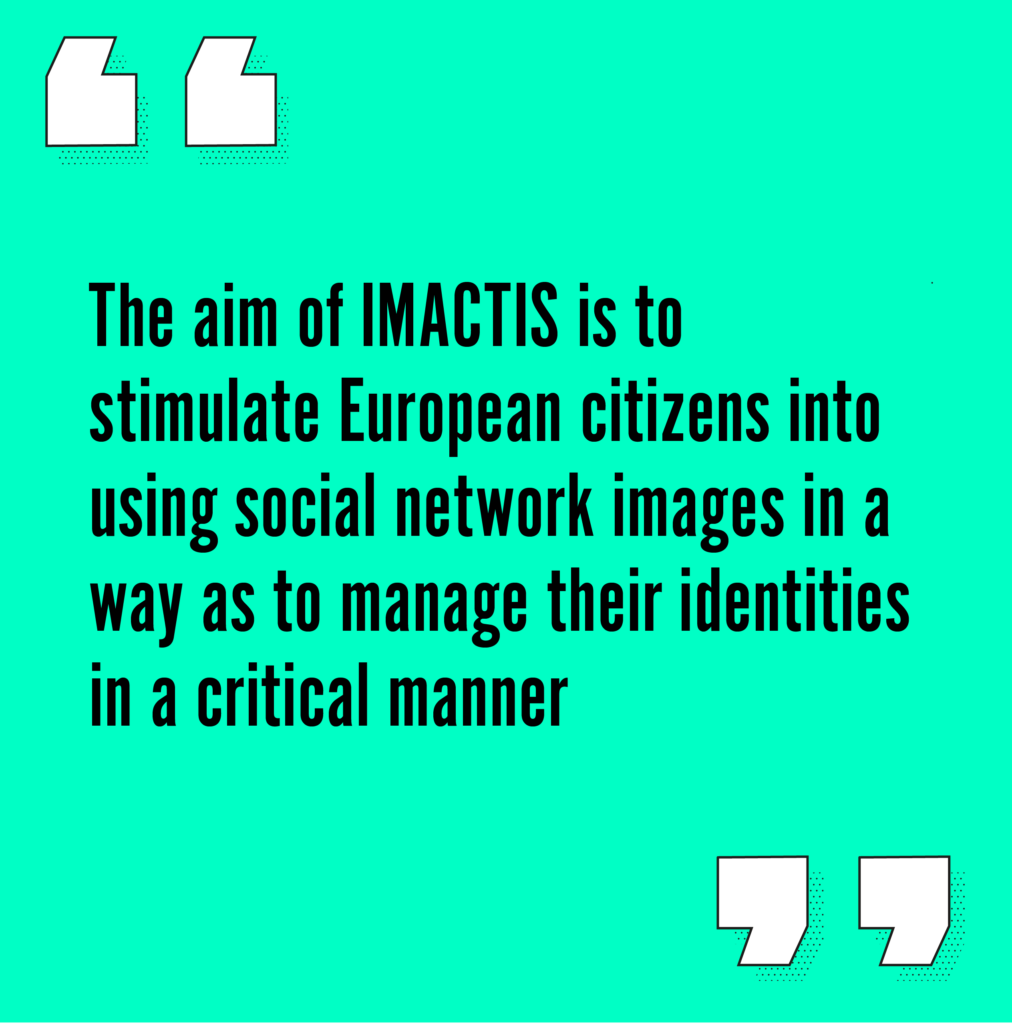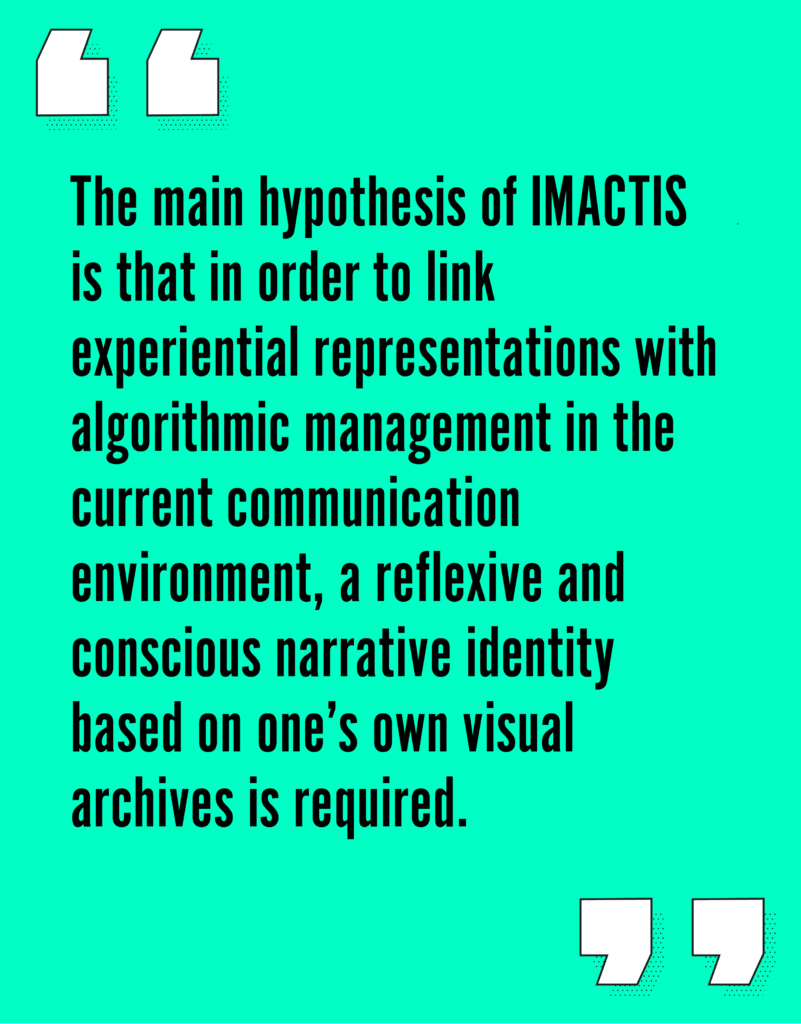
The aim of IMACTIS is to stimulate European citizens into using social network images in a way so that they may manage their identities in a critical manner. Digital media have profoundly changed the meaning of identity through two different shifts as regards social interaction. On the one hand, experience-based communication such as the acts of liking, following, and sharing, together with the diffusion of representations such as selfies, point of view shots, and live videos, have led to the dissemination of instinctual forms of identity expression. On the other hand, the profiling of people’s social and political circles (Facebook), entertainment tastes (Netflix), service or product needs (Amazon and AdSense), and even of their sexual partners (Grindr and Tinder), has led to the delegation of behavioural identity management to algorithms.
The main hypothesis of IMACTIS is that in order to link experiential representations with algorithmic management in the current communication environment, a reflexive and conscious narrative identity based on one’s own visual archives is required.
By approaching images as an everyday language, three axes of research are developed around a semio-rhetorical perspective:
1) social networks are reconceived as semio-rhetorical spaces in which the construction and transformation of value obeys an attention and gift economy. New public actors, new genres of discourses and images, as well as new ways of reassembling communities are emerging. This axis will follow the figures of influencers, social actors capable of exploiting quantitative appreciations in order to transform them into financial and reputational value;
2) a new epistemology of visual documents, articulated into mediatic, compositional, and rhetorical dimensions, will guide the study of the heterogeneous and complex European visual cultures to be found on social media: the ethnic and physical variety of people and places, and the most widely used configurations and themes;
3) another, more complex set of visual corpora will be built, that of found footage videos belonging to the fictional, informational, and ludic macro-genres. These corpora will serve as an experimental field: the narration strategies built upon the reuse of visual archives will be adapted to identity narrations on social networks. The resulting repertory of rhetorical strategies will aim to exploit the positive diversity embedded in European Union identity, as stated in the official motto “United in Diversity.”
